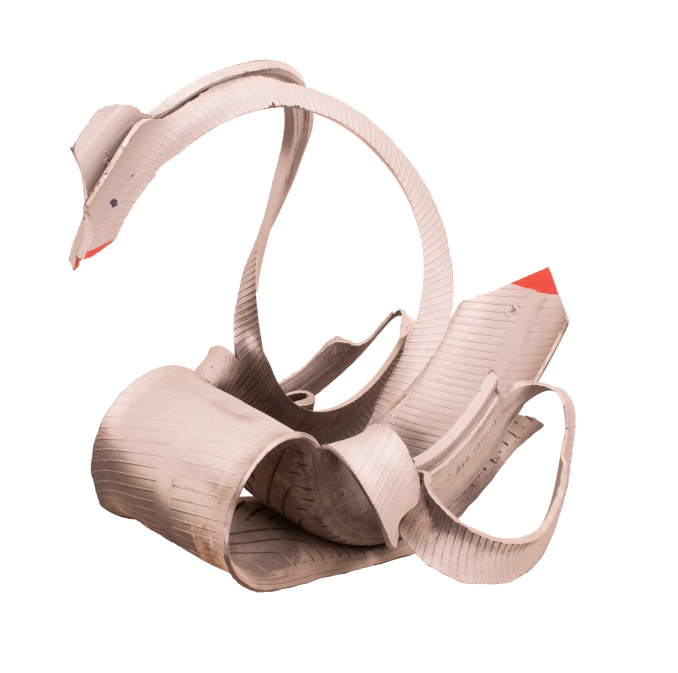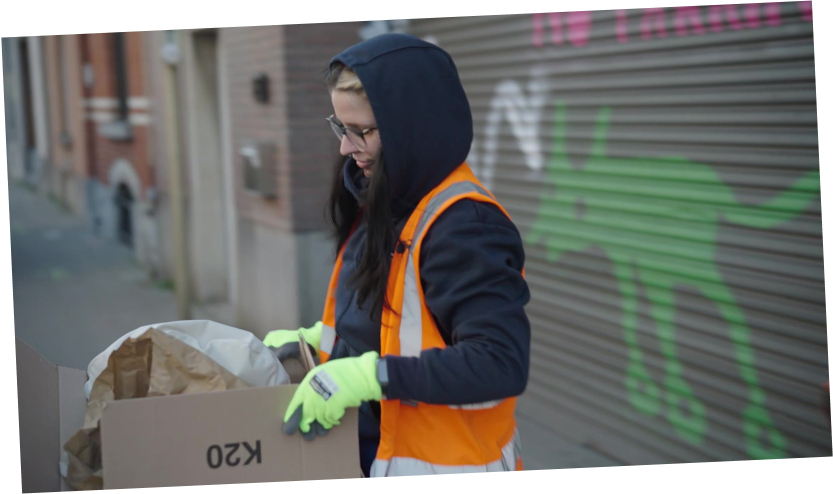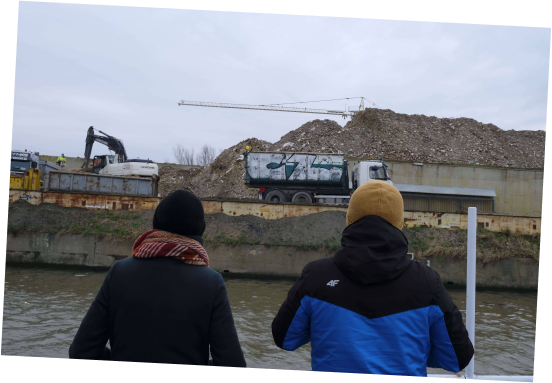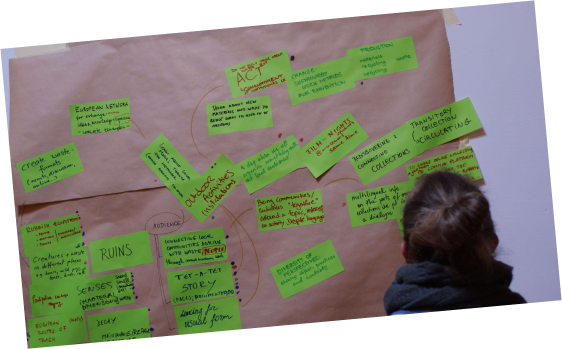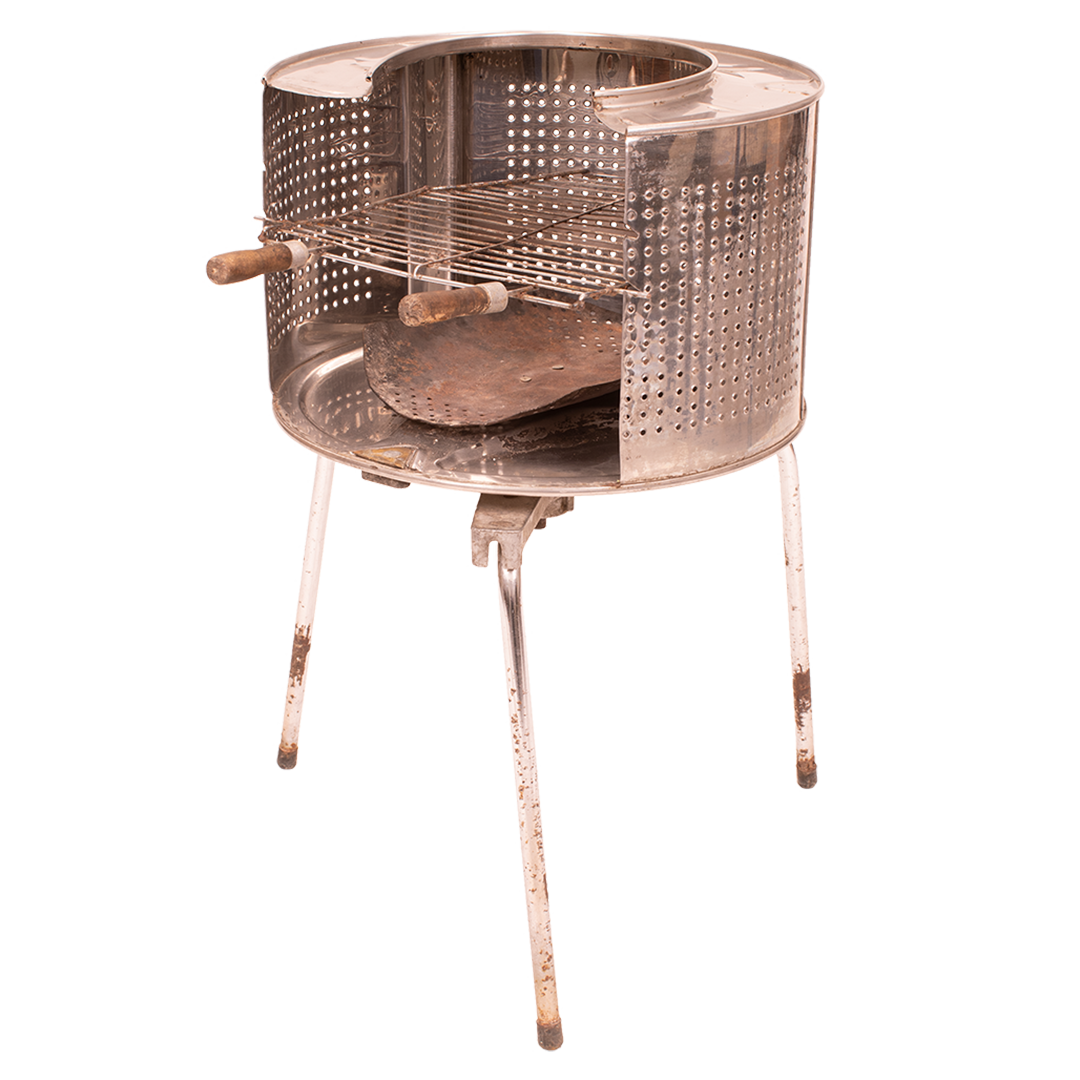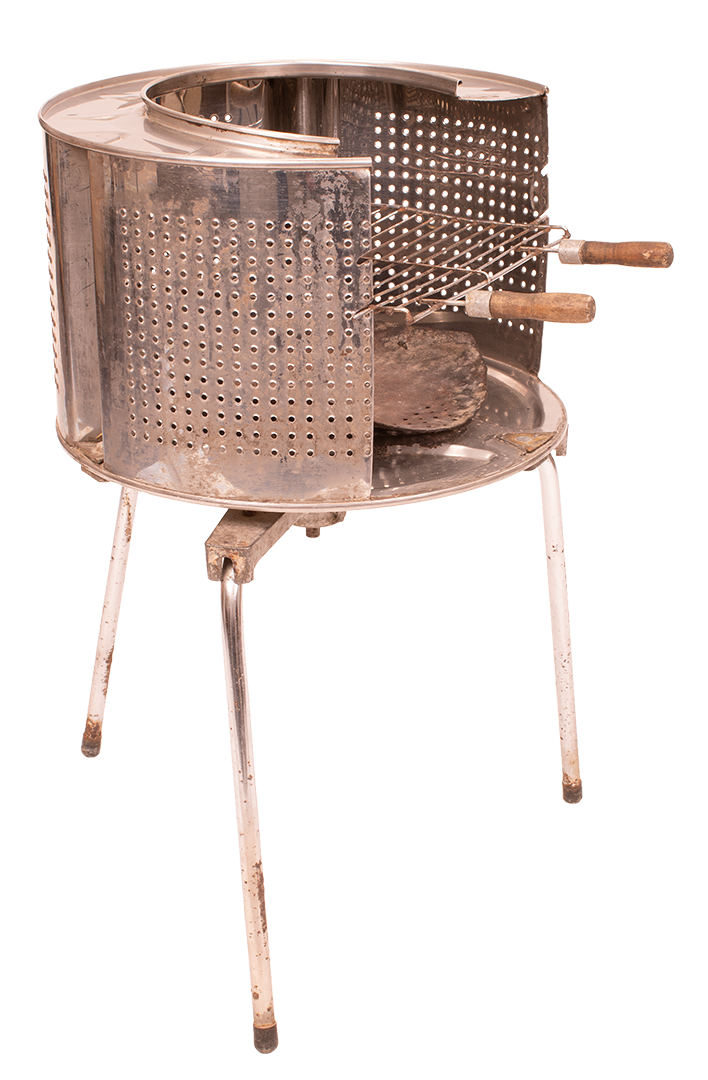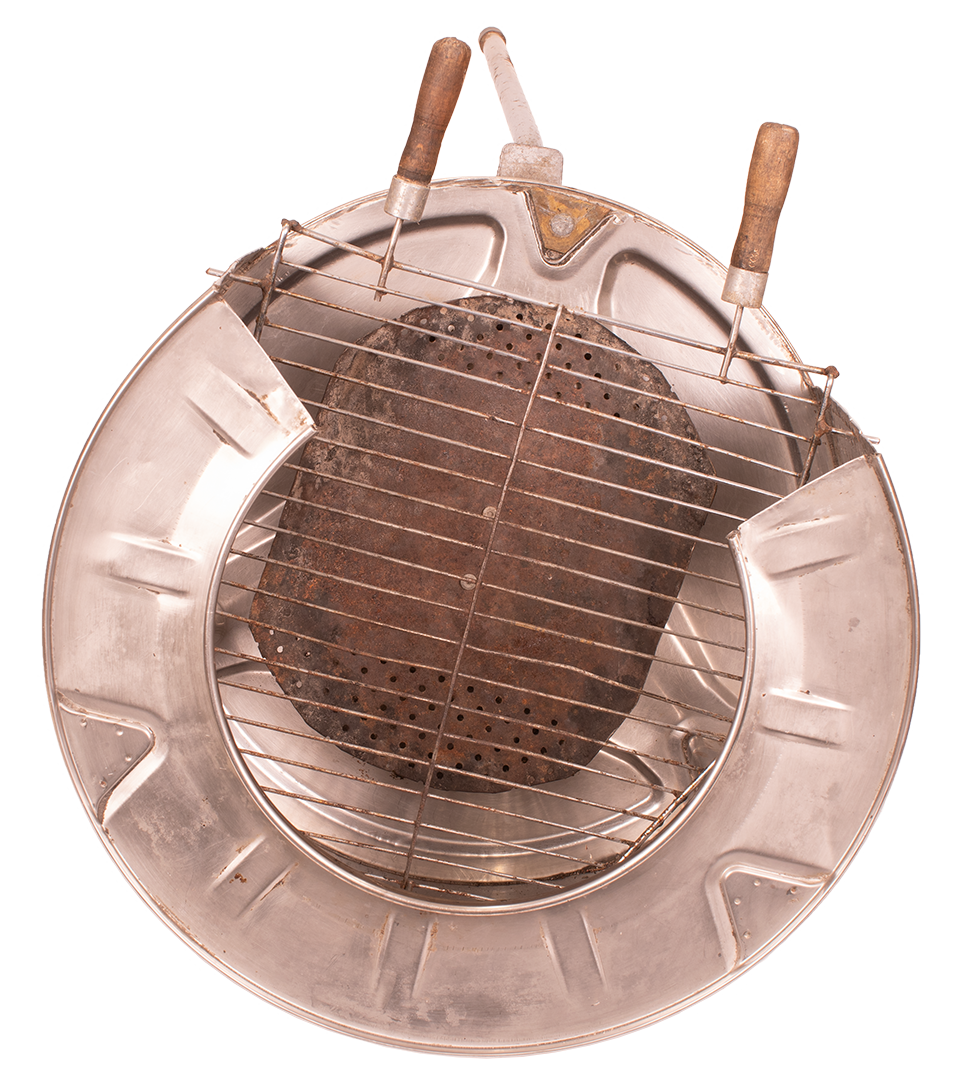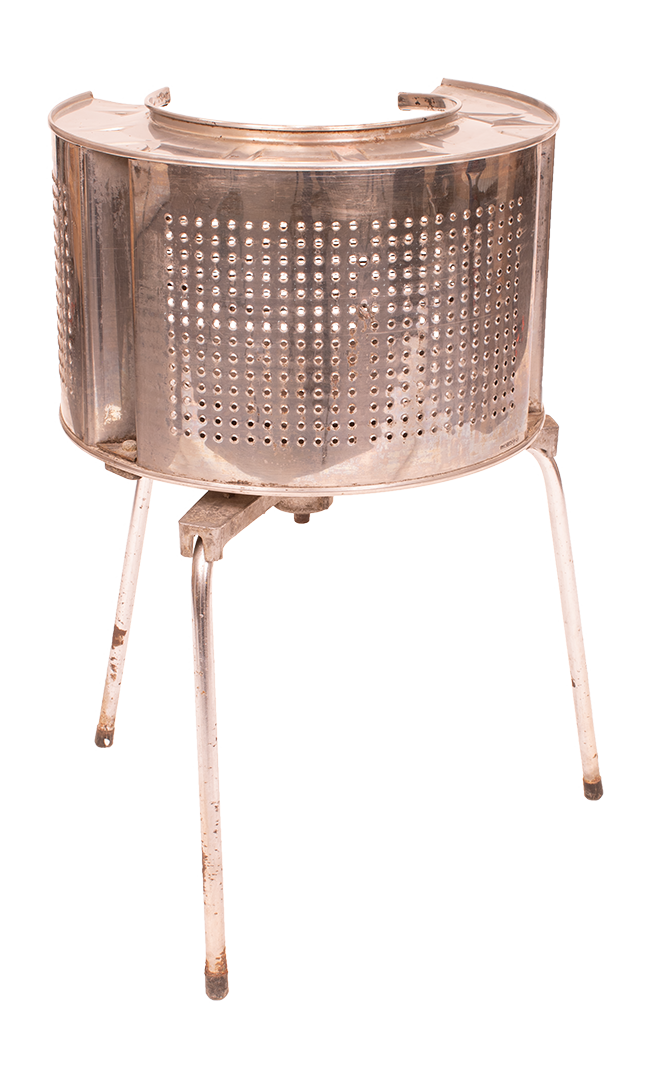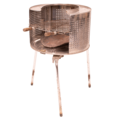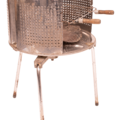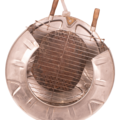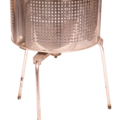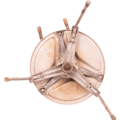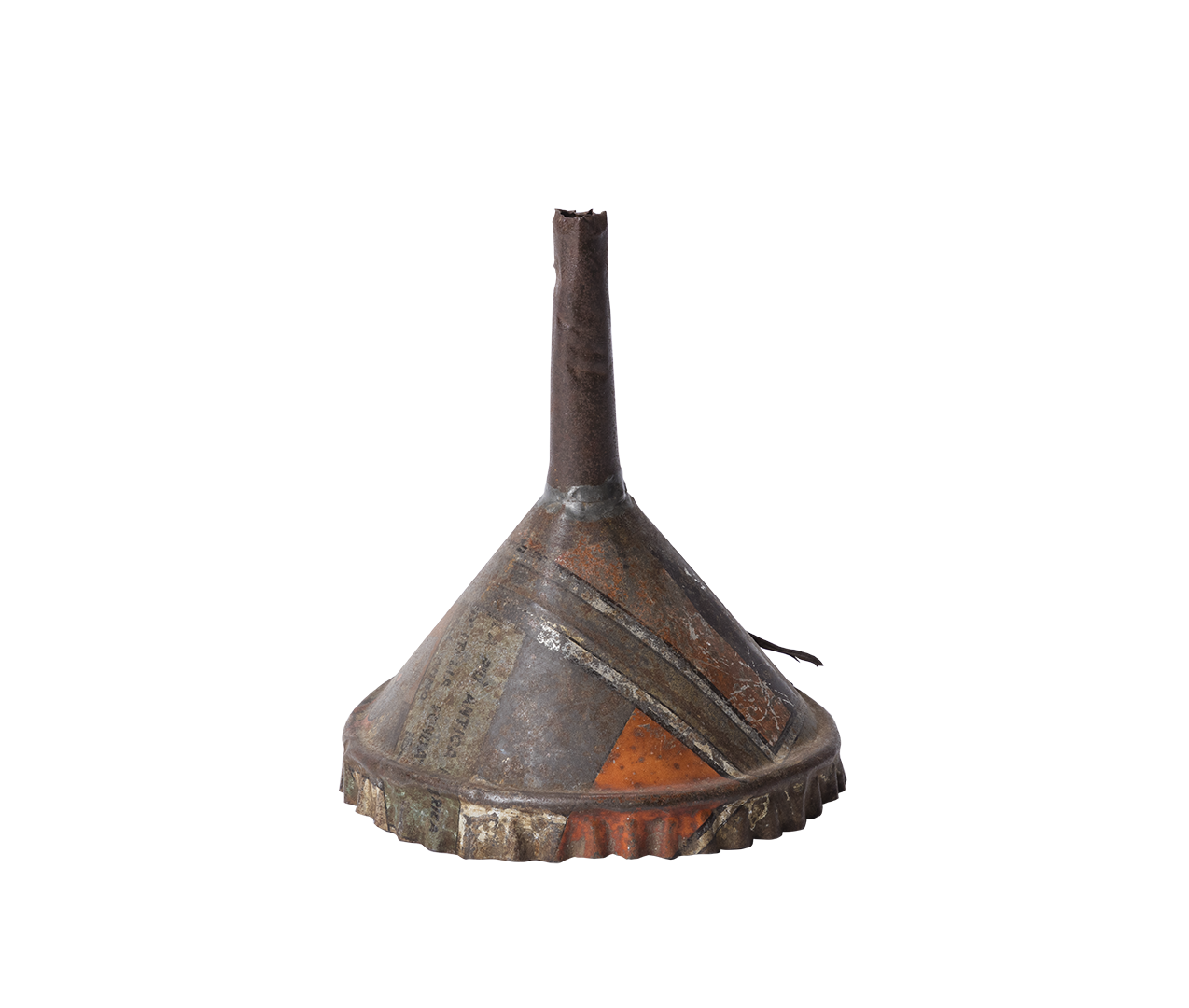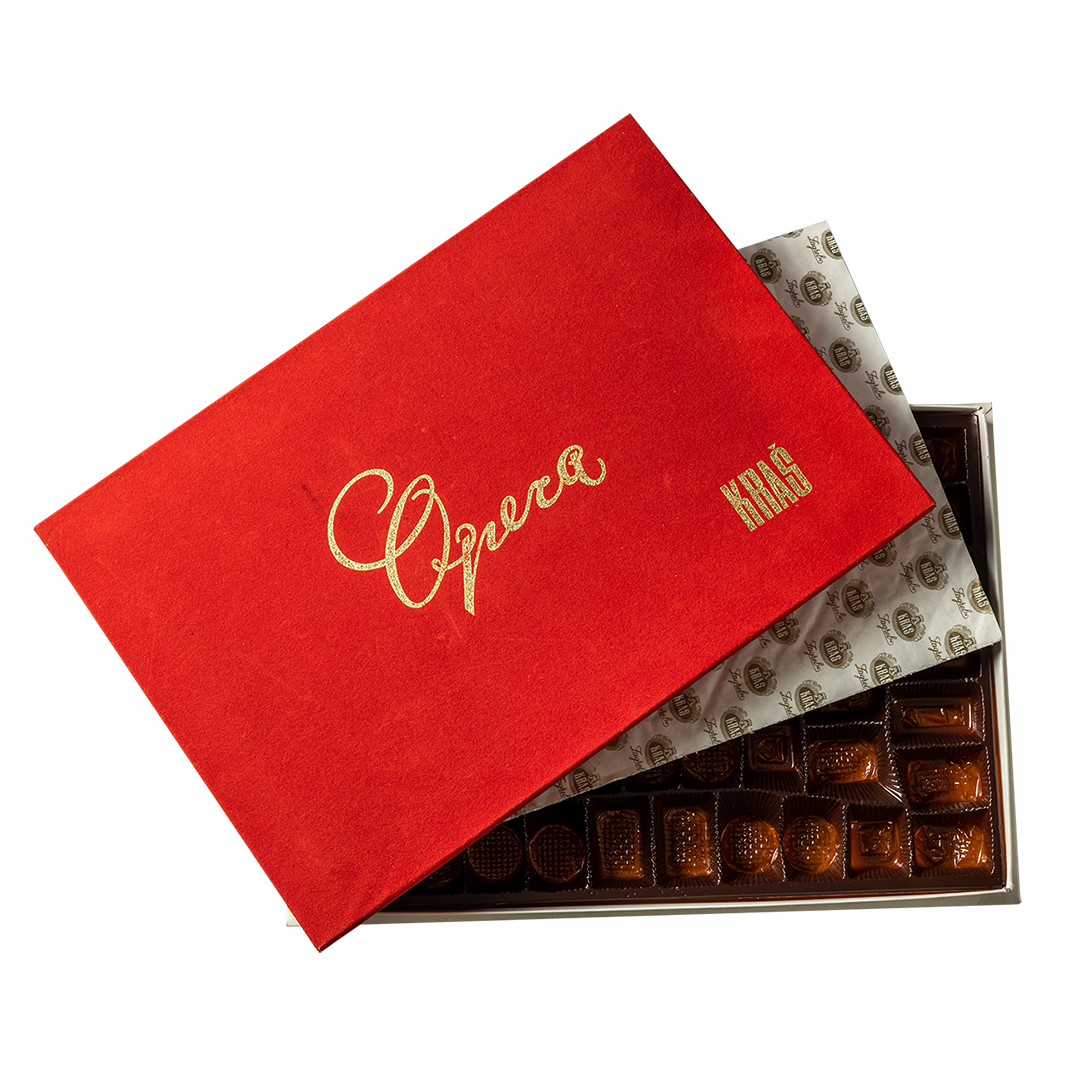Artist/Maker Stanisław Chełstowski
Date Production/Creation
No data/21st century
Entry in the museum collection
2016
Place of origin
Janów Podlaski, Lubelskie Province, Poland, Europe
Current location
National Ethnographic Museum in Warsaw, Warsaw, Poland
Material
Steel, cutting, welding, cutting out and screws
Dimension
Height 74cm; diameter 45.5cm
Inventory Number PME 58930/1-2
Keyword Home Scarcity Self-made/DIY
Copyright PME/NEM
Status In storage
Image Credit Photograph by Edward Koprowski
Necessity is the mother of invention. It can also be the enemy of waste.
What is this object about, who are the people behind it?
It is difficult to determine precisely when the fashion for barbecuing arrived in Poland. After all, the thermal treatment of meat is as old as the traces of the first campfire. For the anthropologist, a DIY grill is a story with at least a few different threads. The first is as a popular way to spend leisure time, for which the grill and the characteristic smell of burning charcoal have become a symbol: mates, beer and music. The venue is irrelevant – it could even be the balcony of a block of flats. Another aspect is the formation of Poles’ eating habits. Currently, the barbecue is the first victim of the post-meat policy of vegans. Waste management in Poland is also an important thread. If not for the grill made from the drum, the entire washing machine would have ended up being dumped in the forest.
What places is this object related to, how European/transnational is it?
The object and its character are in no way unique or endemic to Polish culture. Both the motivations for its construction and its purpose lie deep within human nature: creativity, hunger and eating together. It is only the cultural layer, i.e. how, with whom, where and what we eat, that seems to set us apart: there is no better thing than a barbecued pork neck cured in honey-mustard sauce and a cold beer – oh, I can already hear the voices of dissent.
Why and how did this object arrive in the museum’s collection?
The context for the contemporary and DIY grill is a collection of everyday objects framed by the history of Polish rural culture, which is marked by chronic shortages. This scarcity unleashed creative and adaptive potentials and, with the flourishing of the capitalist-consumer economy, recontextualised such creations by embedding them in the field of hobbies and skills. Such products were often associated with the lower economic status of the maker.
What is the relation of this object to waste?
The basic element linking the object to the broader concept of waste in this case is reusing and giving a new function to already-existing objects. If we think of it as a product of a culture of scarcity, then a whole class of concepts comes into play that refer to a human being relegated to the category of junk – a human being who lives outside the margins of social control.

